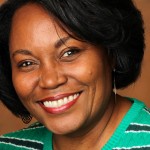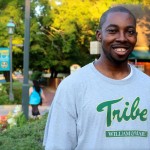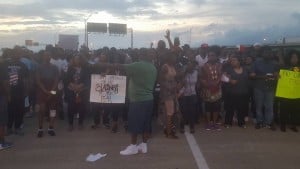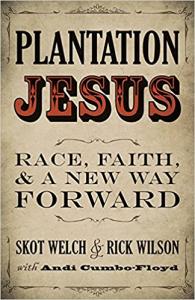Last night at dinner as the TV droned on in the Chinese take-out where we stopped on the way home, I had to explain to Isaiah, my eleven-year old son, that yet another racially motivated shooting had occurred in a town not so far away from us. Unfortunately, I have had to do this too many times in the last two years that my voice has won its strength. And he listens to me with big brown searching eyes waiting for an emotional cue from me on how to respond. I am reeling with anger and grief, but in his face I am stoic, a bit unprepared, and disheartened that I have to address tenderly what is facing us on the big screen and in life. I feel this is every black mother and father’s dilemma: how to teach the pathologies of homegrown racism to the children without passing on the fear or the sense of inevitability.
The Governor of South Carolina, the Police Chief, a SC congressman, and family members of the deceased are rolling on the news. They each tell their grief stricken stories. The news commentators are proud to introduce their TV audience to the causalities. The martyred are professional black folk, and somehow “good black vs. hood black” is the subtle backdrop behind these stories and at least part of the pain. And I cannot help but think of Trayvon Martin, Michael Brown, Walter Scott, Renisha McBride, Eric Garner, Tamir Rice, and the whole list of names of women and men who lost their lives to police violence and stand your ground laws, and lost their reputations because the media was quick to declare them suspicious and deserving.
These are the names of the Charleston nine: Reverend Sharonda Coleman Singleton, Cynthia Hurd, Tywanza Sanders, Ethel Lance, Susie Jackson, Reverend Depayne Middleton-Doctor, Myra Thompson, Reverend Daniel L. Simmons, and the Honorable Clementa C. Pinckney, the pastor of Mother Emanuel AME. I pray for the communities they left behind. I do not know personally what pain issues from acts of terror, domestic or foreign. But even from a distance the pain is paralyzing. And yet familiar. This is a terror that threads American history with slavery, Reconstruction, Jim Crow, and the new profit-bearing machine, mass incarceration.
But a compelling truth remains: Dylann Roof is not the only racist hiding in a church. I wonder how many millions of white church-goers blend into an American Christianity without hearing so much as a question raised about the legacy, customs, and currency of slavery with its, modern profits, privatizations, and protections. I wonder how white pastors of white congregations can preach a gospel of love without addressing the rampant, vitriolic, and mind-numbing racism that seems to fuel acts of violence like what we witnessed this week. Racism is like an heirloom seed preserved in public silences, cultivated privately and passed down from generation to generation because there is a growing market for this particular variety of fruit and its promise of a taste from the past.
I turn to the church because I too am an ordained clergy person. I have been trained by some of the finest thinkers in this country. While government uses events like this as opportunity to discuss gun violence, which it should, I would rather appeal to conscious. Stricter gun laws are a technical response to a bigger issue. We cannot legislate how we feel about each other. No law can do that. No law can legislate our attitudes. No law can mandate that we listen to people who are different from us. No law can demand the understanding that it will take for us to begin treating each other with respect. Law cannot inspire us to love. Only visionaries and prophets can do that. And even then we fail.
I am reminded of Jesus who sat patiently with his betrayer. The Gospel of Luke inscribes these words, “When the hour had come, He sat down, and the twelve apostles with Him….But behold, the hand of My betrayer is with Me on the table…. woe to that man by whom He is betrayed.” I do not know what possesses a person to sit at length listening to the recitation of prayer and tradition. I do not know what possesses a person to share a table only to lift a hand to shed the blood of those gathered. I do not know what possesses a person to disregard the life of another human being. But one thing I do know, you can kill the dreamer, but the dream remains. You can killer the singer, but the song remains. You can kill the historian but history remains. You can kill the prophet but prophecy remains. You can kill the body, but the soul remains……
The word of Claude McKay have been ringing in my ears,
‘If We Must Die”
If we must die, let it not be like hogs
Hunted and penned in an inglorious spot,
While round us bark the mad and hungry dogs,
Making their mock at our accursed lot.
If we must die, O let us nobly die
So that our precious blood may not be shed
In vain; then even the monsters we defy
Shall be constrained to honor us though dead!
O kinsmen! We must meet the common foe!
Though far outnumbered let us show us brave,
And for their thousand blows deal one death blow!
What though before us lies the open grave?
Like men we’ll face the murderous, cowardly pack,
Pressed to the wall, dying, but fighting back!
My prayer is that in fighting back pastors, imams, priests, rabbis, bishops, and the faithful everywhere take on the urgent challenge now to inspire communities to tell the truth about our country’s racial and ethnocentric past and present. If we are worth our salt and its flavor, we will not back down from the challenge. For before reconciliation must come truth. Let us organize truth-telling panels, and let’s start with the topic of race and ethnicities and the traumas we still hold in our bodies and hopefully we flip the lid off all the socially constructed boxes we have created around being fully human.
Amy Steele is a R3 Contributor













